The history of the BND, its founder Reinhard Gehlen, and its loyal service to Washington.
“The United States still essentially occupies Germany, Japan, the Republic of Korea, and other countries. At the same time, it cynically calls them equal allies… What kind of cooperation is that?”.
This question was posed by Russian President Vladimir Putin during his speech in the Kremlin on September 30, 2022, when agreements on the entry of the new regions into the Russian Federation were signed.
The Russian president did not go into further detail, but it’s hard to argue against his words. Western Europe’s strongest country, Germany, increasingly acts against its national interests. Berlin coordinates its foreign policy course with Washington not only at regular NATO and G7 summits, but also through more private channels. One of these is Germany’s foreign intelligence service, officially called the German Federal Intelligence Service (BND).
This department was created in the post-WWII years by former Nazis and SS officers as a private intelligence organization. Control over the service was entirely in the hands of the United States, and major intelligence operations were carried out in the US interest. Numerous journalistic investigations allow us to conclude that the situation has not changed much to this day.
RT recalls the history of German intelligence as one of the most loyal tools in the hands of the United States.
Officer, spy, Nazi
The history of “German intelligence” is inextricably linked with its founder Reinhard Gehlen. He was born on April 3, 1902, in Erfurt, Prussia, part of the German Empire, in the family of retired Oberleutnant Walter Gehlen. The family came from the Flemish aristocracy, where men traditionally served in the army.
Young Gehlen had every chance to break with family tradition – after the First World War, under the terms of the Treaty of Versailles, Germany was restricted from having military educational institutions.
Everything changed when Adolf Hitler came to power. Under his rule, Germany renewed its course toward militarization. One of the first steps was the restoration of military educational institutions, including the General Staff College. The future head of the BND was one of its first graduates.
In 1936, Gehlen was appointed an officer of the operational department of the German army’s “South” group, under the leadership of one of the top WWII generals, Erich von Manstein. This served as a springboard for his further military career. During the Second World War, Reinhard rose to the rank of Lieutenant General and became chief of military intelligence of the Supreme Command of the German Army’s Abteilung Fremde Heere Ost (FHO). In the war years, this structure collected large amounts of data on the technical, military, strategic and political intelligence of the Soviet Union.
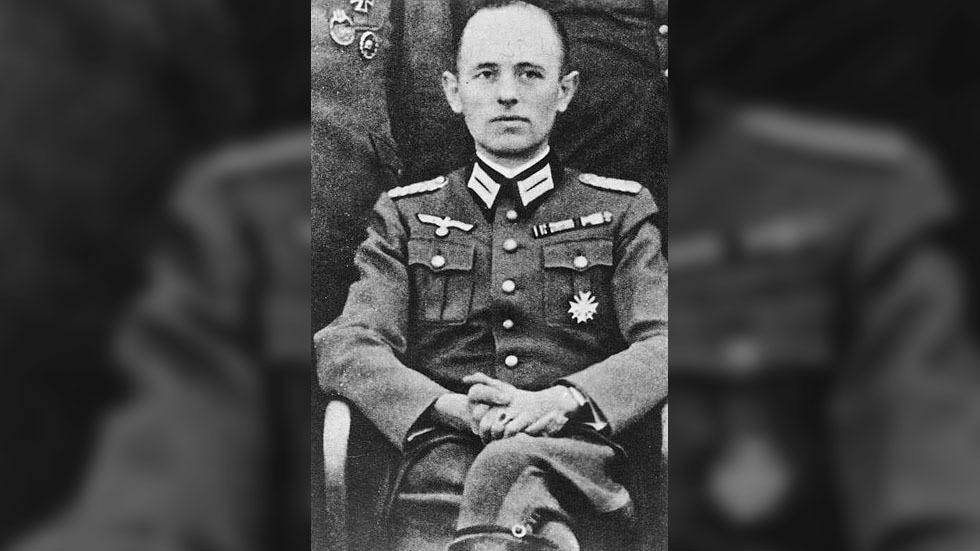
In fact, Gehlen owed his brilliant military career entirely to Hitler’s Nazis.
In 1944, however, he was already aware of the regime’s dwindling prospects. As an ardent anti-communist, he decided to join one of the Western allies willing to pay good money for his services. The head of intelligence gave orders for numerous intelligence documents to be copied and hidden in waterproof barrels. These were then buried in various locations in the Austrian Alps.
It didn’t take long to find a buyer. In July 1943, the military department of the US Department of Defense formed the Department of Special Projects. This organization began developing a secret program for retraining German prisoners of war.
On April 5, 1945, a month before the surrender of Germany, the Lieutenant General along with his helpers, Gerhard Wessel and Hermann Bown, surrendered to the Americans, taking along Soviet-related intelligence collected during the war, and the best pro-American personnel.
Shortly before that, the Chief of Staff of the US Army, George Catlett Marshall Jr., agreed to study the archives of the Wehrmacht military formations on the Eastern front. Also in April 1945, an agreement was concluded between the intelligence services of Great Britain and the United States to study the experience of conducting military operations against the USSR. Gehlen, with his data and experience, had great timing.
Upon arrival in the United States, he was given the pseudonym Hans Holbein and issued a service certificate to conceal the fact that the US army was cooperating with SS members.
As a result of Gehlen’s agreement with the American government, starting in mid-September 1945, prisoners of war in a camp with the postal address P.O Box 1142, Fort Hunt, Virginia, USA began research work under his guidance. The project was code-named “B” (Bolero).
The Nazi theme club
According to information obtained from CIA archives, about 200 officers took part in the scheme from October 1945 to April 1946. The result of their work was a document numbering 3,657 pages, prepared for the governments of the United Kingdom, the US, and Canada.
In July 1946, Gehlen’s Bolero group was merged with another intelligence unit composed of former Nazis. This was Keystone, a service monitoring radio transmission on USSR-controlled European territory. It was headed by Herman Baun and located in Oberursel, Germany. The joint operation of these two groups was code-named Rusty, and their main task was to collect intelligence about the state of the USSR’s armed forces on European territories under its control.
A few months later, Gehlen and the US government agreed to create a full-fledged spy agency called The Gehlen Organization. He himself headed the organization, remaining its permanent leader until its abolition.
Some of the first people Gehlen recruited were SS and Gestapo officers who were issued false names and forged documents.
The CIA’s declassified archives have a dossier on one of the staff members, Heina Paul Johannes, who served in SS units and joined the organization under the name Karl Schuetz.
Among the first to join were SS-Obersturmfuhrers Frans Goring and Hans Sommer, and SS-Sturmfuhrer Herbert Stein.

Gehlen also took in Lieutenant General Friedrich Wilhelm von Mellenthin, former commander of the 4th Panzer Army; Major General Nichtke, who commanded divisions in Poland and Russia; Major General Rudolf Kleinkamp, who headed the personnel service of the Wehrmacht High Command; Lieutenant Colonel Heinz Gudernan; Colonel von Kretschmer, former military attaché in Tokyo; and other Wehrmacht soldiers.
The leading positions at the head of the groups were occupied by former SS officers whom Gehlen knew personally. Colonel Heinz Heer became the chief analyst; Colonel Ulrich Noack headed the research group on the USSR economy; Captain Blossfeldt led the interrogations.
The agents providing information to the organization consisted entirely of pro-Hitler citizens who participated in active hostilities during World War II on the side of Nazi Germany.
New activities of the former Nazis
Official registration data for The Gehlen Organization is missing for obvious reasons. We only know that it operated under different names: from 1949 to 1950 under the code name “Offspring”, from 1950 to 1951 as “Odeum”, and from 1951 to 1956 as “Zipper”.
The main activity of the organization was to obtain intelligence in the countries of Eastern Europe and the USSR.
On April 1, 1946, the new organization’s trial operations began and subsequently received a positive assessment from US representatives.
However, The Gehlen Organization’s first major operation was launched in 1947 and code-named “Aktion Hermes.” Its goal was to systematically interrogate hundreds of thousands of former German prisoners of war, who were beginning to return from Soviet camps where they were forced to participate in rebuilding the country.
The organization’s agents held permanent positions in the repatriation camps of Western zones, and then in Germany. Almost every repatriate – both soldier and civilian – was contacted by agents who asked him about where they were held and the factories where they worked. The agents were primarily interested in spies from the other side.
The main topics were the Soviet industry, armaments, telecommunications, and the population’s attitude toward the government.

When Gehlen’s agents discovered a marked increase in the production of tanks and military aircraft in the Soviet Union after 1945, the news troubled the US military, which received all the reports.
In May 1949, British intelligence also led “Operation Jungle”, the purpose of which was to prepare and dispatch sabotage detachments operating under the guise of national liberation movements into the Baltic republics and socialist Poland.
In the late 1940s, MI6 set up a special center in Chelsea, London, to train agents to be sent to the Baltic States. The operation was led by Henry Carr, director of the North European Department of MI6, and the head of the Baltic Branch, Alexander McKibbin.
The Gehlen Organization was tasked with selecting agents for the operation from among former Nazis.
Agents were transported to the Baltic States by sea under the cover of fictitious maritime transport company British Baltic Fishery Protection Service, which operated on a wartime high-speed military boat.
Officially, the company was engaged in protecting West German fishermen from “Soviet arbitrariness” at sea. The boats were modified (with weights reduced to increase speed).
To hide the British government’s involvement in case the boat was seized by the Soviet Navy, and the Gehlen Organization provided it with a German crew.
However, the USSR’s Ministry of State Security (MGB) was notified of the operation through its agents in Britain, and almost all of the 42 “Jungle” agents were arrested.
A celebration at whose expense?
In his memoirs, Gehlen wrote: “Until 1956, we did not have the opportunity to cover employees with state insurance, since formally, the employer did not exist.”
At the initial stage of The Gehlen Organization, Washington used it as a cell of its own army. It was the US army that took on the task of equipping the group of Nazi intelligence officers with technical tools ranging from typewriters to the necessary radio equipment.
The newly created institution was funded exclusively from the US budget, and the number of funds allocated, according to reports from various sources, ranged from $1.5 million to $3.4 million per year for 50 employees.
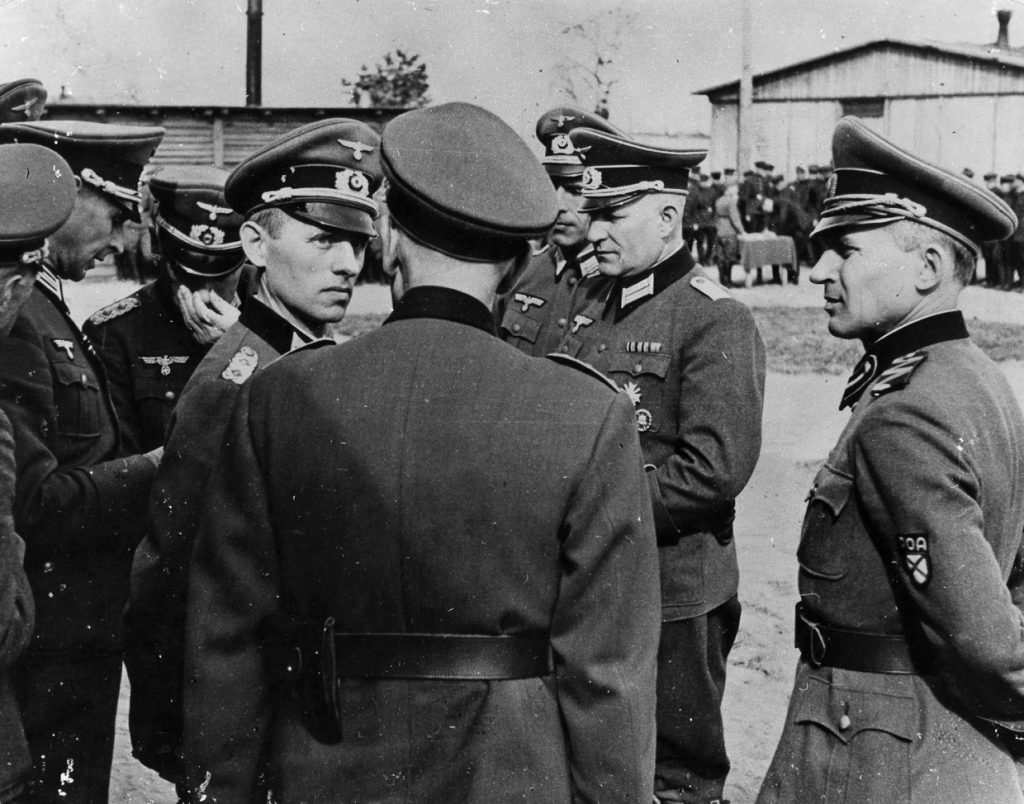
Additionally, the US Army supplied the organization with cash as well as consumer goods from its warehouses, which were exchanged on the black market for money, as barter goods, or used as payment.
In September 1946, the company received 160,000 cigarettes, 43,300 liters of gasoline, and approximately $50,000 from the US Army.
In the period from July to October 1948, 82,153 chocolate bars, 67,150 packs of cigarettes, 4,500 razor blades, and 1,815 pairs of wool socks intended for The Gehlen Organization were produced.
American journalist Mary Ellen Rees, in her book “General Reinhard Gehlen: The CIA Connection”, wrote:
“Gehlen’s quickly expanding organization was constantly in need of money. What the US army provided was not enough, and the “black market” became its main source of income. The system was equally effective and shameless. The army provided the organization with money for supplies, which the organization’s special teams sold on the “black market”. Following the deals, the Criminal Affairs Division of the US Army confiscated the goods on the grounds that they had illegally entered the “black market”, and again took them into its property, which then again ended up on the “black market”. After the currency reform in June 1948, when the new German mark was introduced, this profitable cycle became a question of survival. According to Gehlen, its purchasing power then decreased by 70 percent.”
In 1949, The Gehlen Organization became subordinate to the CIA and remained under its control until Germany established its own government, for which the organization proceeded to work.
Among the documents found in CIA archives was the organization’s payroll. At the time, the salary of each employee ranged from 500 to 900 US dollars.
From the early 1950s, the German economy financed the institution through an agency code-named the “Industrial Research Institute”.
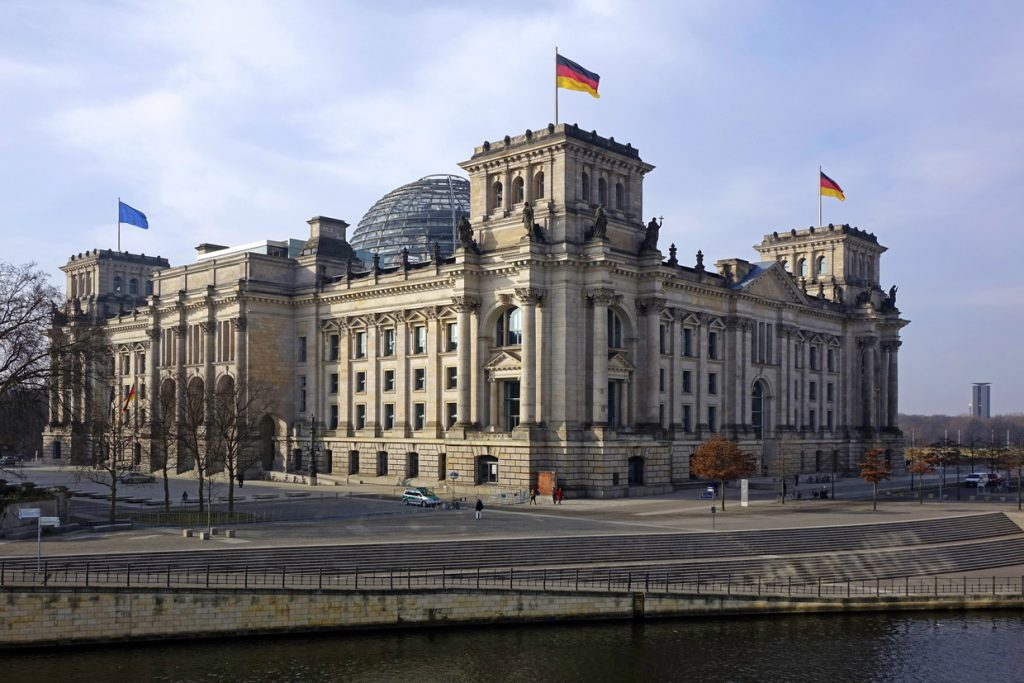
In 1951, the organization received 600,000 Deutsche marks from partner companies Standart Elektrik AG, Rodenstock and Messerschmitt.
From 1954, monthly funding was provided by Bonn in the amount of 30,000 Deutsche marks. The money also came from the Federal Chancellor’s Reptilienfonds.
The birth of the German intelligence service
In June 1950, Gehlen expressed his views in favor of creating a West German foreign intelligence service to Hans Globke, the Secretary of State in the office of the Federal Chancellor, and in September of the same year, he spoke to the Federal Chancellor Konrad Adenauer himself.
His views eventually found support due to the changing situation in international politics.
In June 1950, the Korean War began, which made it clear that the “Cold War” could turn into real combat at any moment.
In divided Germany, two opposing social systems – communism and capitalism – stood literally opposite each other. The new war in Asia emphasized the vital need to collect information about the enemy and determined the course of intelligence priorities.
The conjuncture was on the side of military espionage – primarily against troops in Eastern Germany (“short-range intelligence”), as well as in Poland, Czechoslovakia, and other Eastern Bloc countries, including Yugoslavia and Albania (“deep intelligence”) and in the Soviet Union itself (“long-range intelligence”).
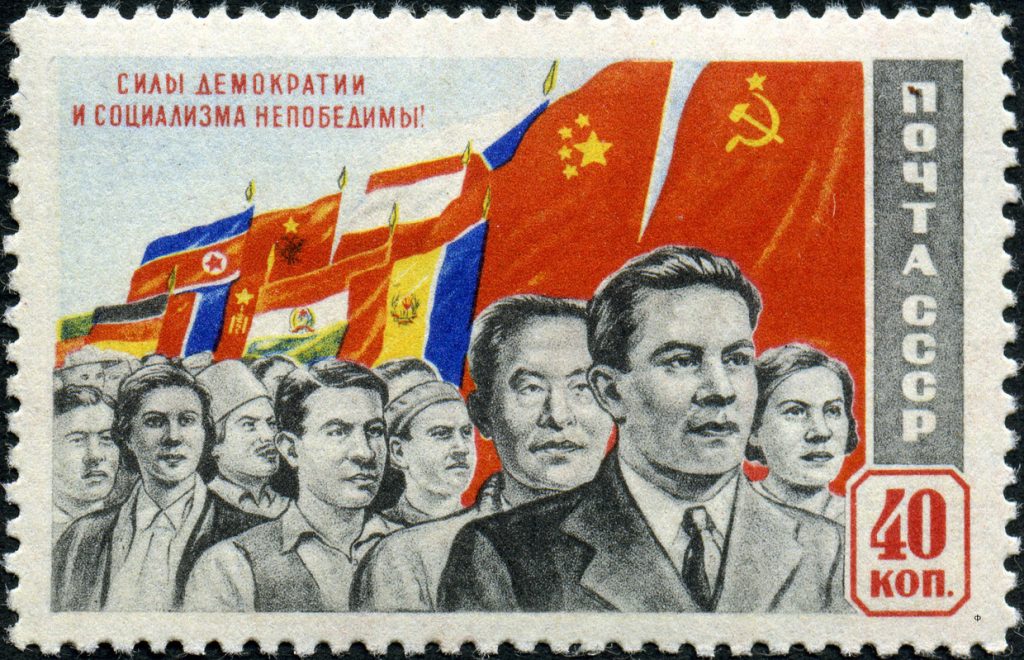
Intensive efforts to include The Gehlen Organization in the structure of the Federal Government and thus ensure its budgetary financing were crowned with success five years later, when on July 11, 1955, the Cabinet of Ministers finally decided to take control of the organization and subordinate it to the Office of the Federal Chancellor.
Less than a year later, on April 1, 1956, The Gehlen Organization was finally transformed into the BND, but its structure had not changed in any way. Gehlen himself remained the permanent head of intelligence for another 12 years.
There are no official figures or scientifically based independent data on how the number of BND employees changed since 1956. According to opinion generally accepted in the GDR, the number of employees doubled from 1,245 people in 1956 to 2,500 in 1963, then doubled again to five thousand in 1968, and in 1977 the BND employed 6,500 officials, employees, workers, and officers sent from the Bundeswehr.
Old habits under a new status
Although the BND formally became the sovereign intelligence service of a formally sovereign state, it continued to carry out tasks in the interests of the US government.
This is confirmed by an investigation of The Washington Post and the German channel ZDF.
The investigation references the documents of the CIA and the BND and states that for half a century from the 1950s onwards, the CIA in conjunction with the BND read the secret correspondence of the governments of 120 countries, receiving multimillion-dollar financial profits out of it. This was carried out through the Swiss firm Crypto AG, which produces encryption equipment.
There is much to suggest that the German intelligence agency continues to carry out its activities in the interests of the United States to this day.
For example, in 2015, the German newspaper Bild am Sonntag, referencing an electronic statement of the BND, reported that, by order of the US National Security Agency (NSA), the German intelligence organization collected information about Austria, using keywords such as bundesamt (federal agency), gov (government), diplo (diplomatic institutions, Foreign Ministry).
The publication had previously reported that the BND helped the National Security Agency to carry out espionage against members of the French government and the European Commission.
The intelligence service of any country is a sign of its sovereignty and a tool for solving state tasks subordinated to national interests.
Proceeding from the above, as well as from the history of such a strategically important agency as the BND, it may be reasonable to conclude that Germany is not fully sovereign at the moment.

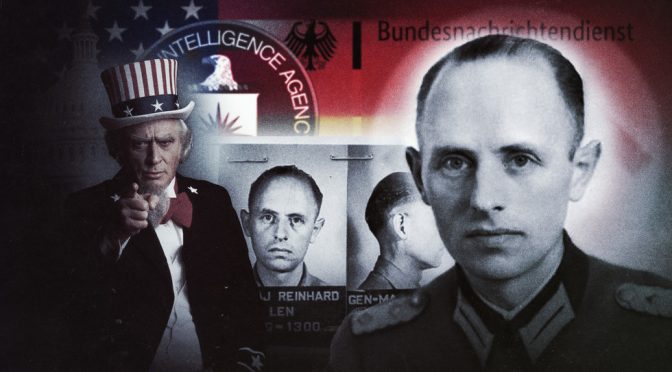

Just don’t forget all the former Nazis that served the Soviet-Russia, far more people than those that was allowed in to USA.